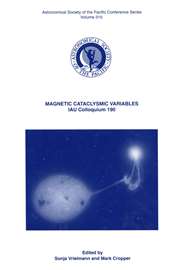Article contents
Catalogue of Occultation Double Star Observations
Published online by Cambridge University Press: 12 April 2016
Extract
The catalogue is divided into three sections: bright stars with magnitudes less than or equal to 6.7: other stars having numbers in the Smithsonian Astrophysical Star Catalogue with magnitudes greater than 6.7: and other stars with no SAO numbers, usually faint and with often only fragmentary information concerning their magnitudes or spectra.
Each section has the following columns: SAO number, other name, magnitude, spectral type, run number of the observation, date in obvious coded form, grade — grade zero indicates no duplicity, grade 1 possible duplicity, grade 2 probable duplicity, and grade 3 certain duplicity. Grades are based on statements by observers. For grades other than zero the vector separation and its computed error are given in arc milliseconds. P.A. denotes the direction in which the vector separation is measured, that is the position angle on the lunar limb as modified by the slope deduced in favorable cases from the spacing of the diffraction bands on the occultation trace. The next column gives the limb slope and its error.
Information
- Type
- Research Article
- Information
- International Astronomical Union Colloquium , Volume 62: Current Techniques in Double and Multiple Star Research , May 1983 , pp. 73 - 90
- Copyright
- Copyright © Lowell Observatory 1983
- 1
- Cited by

